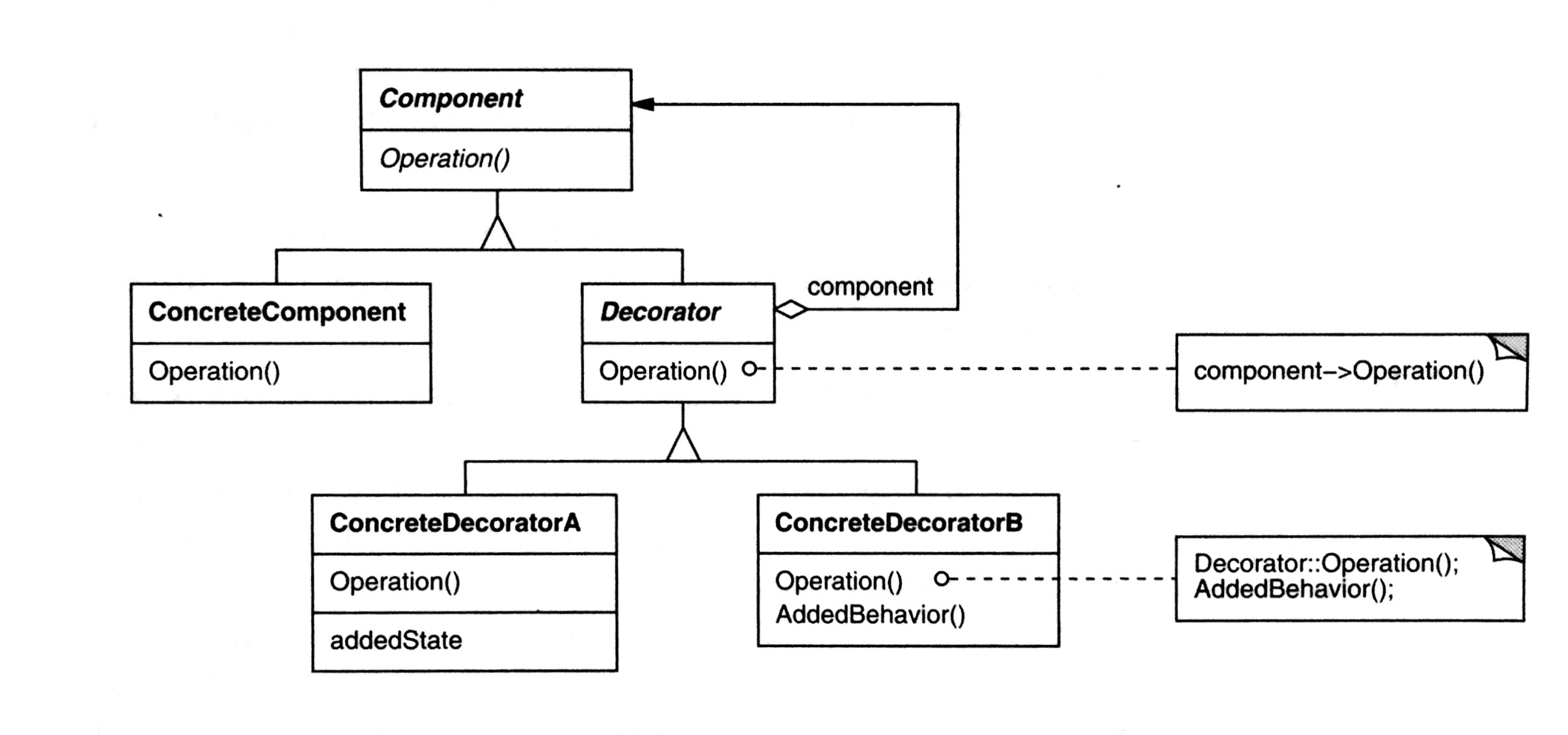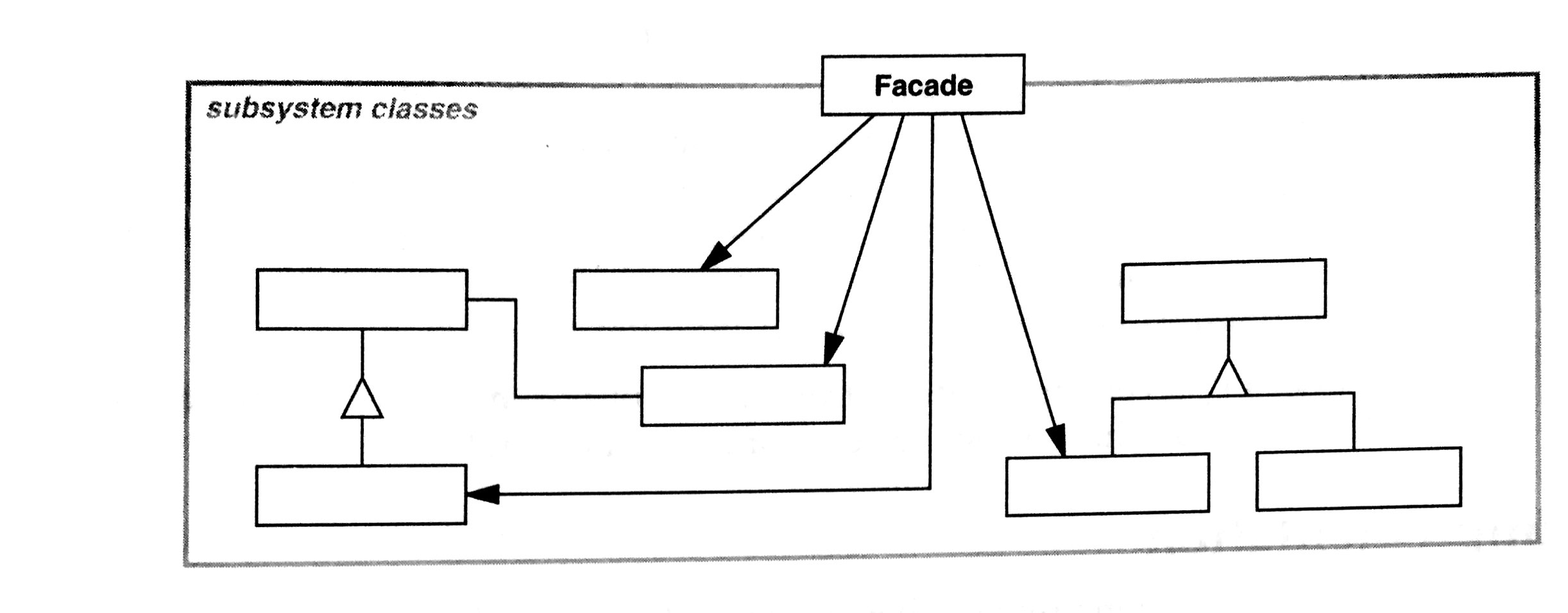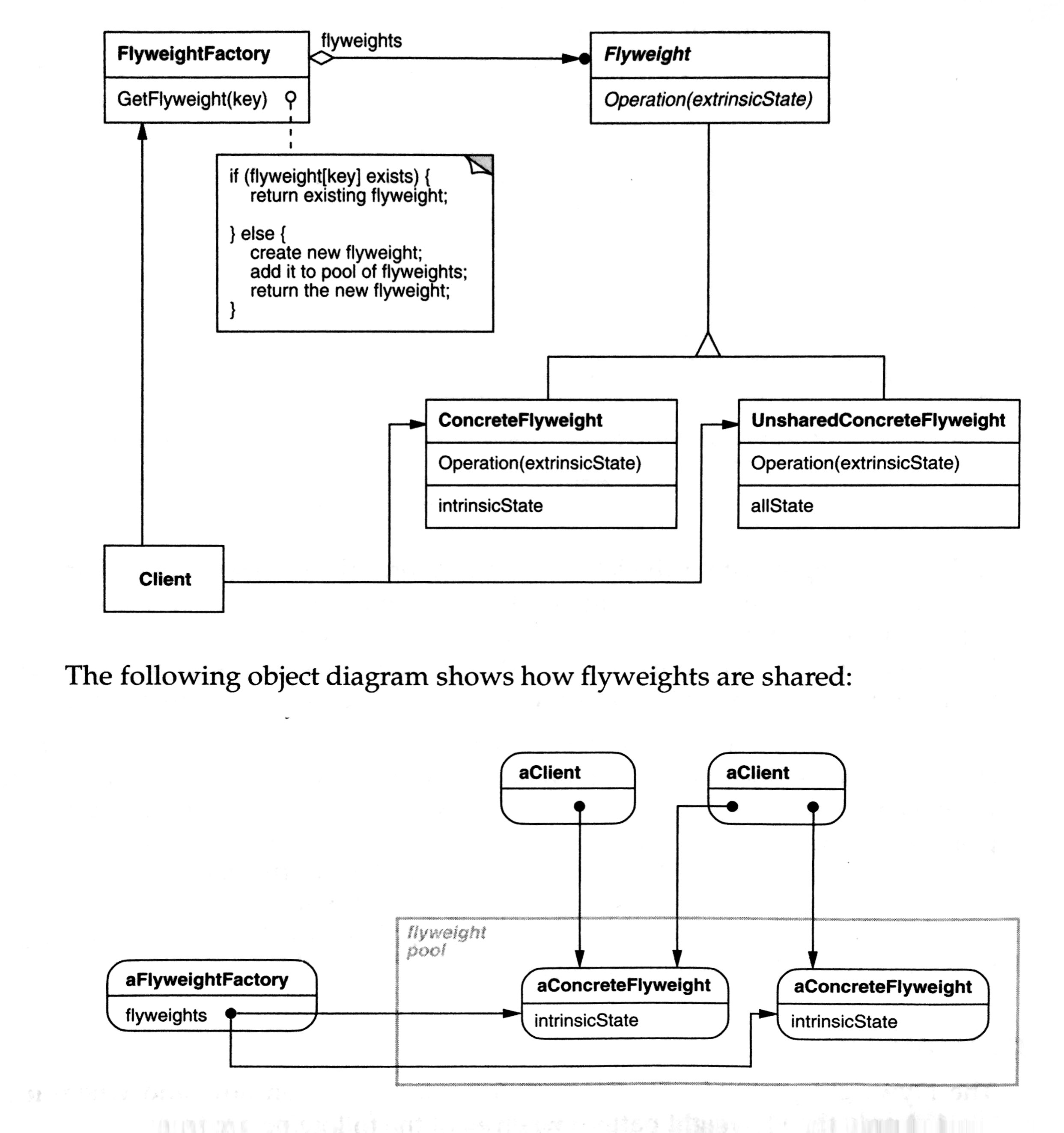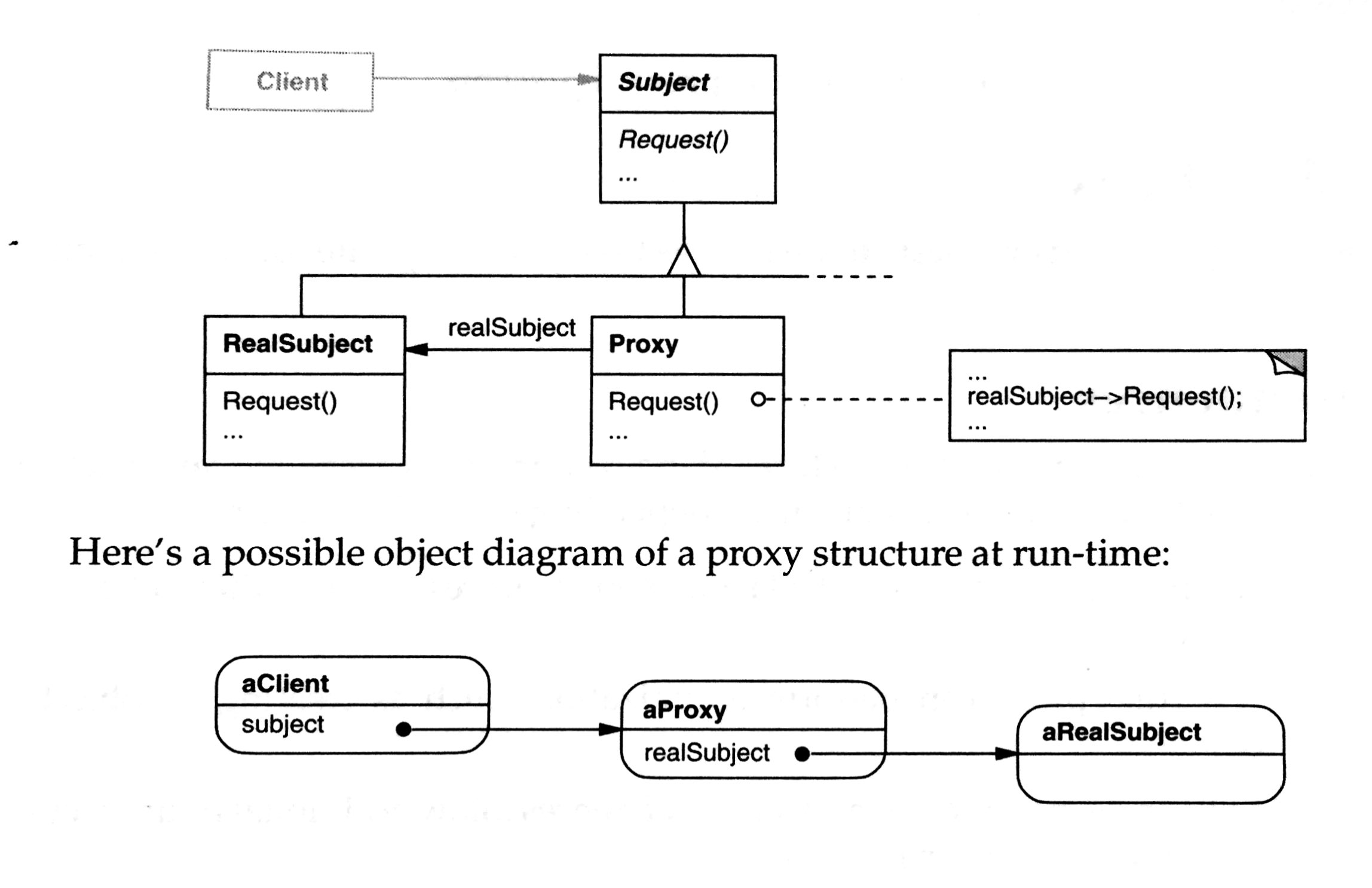DECORATOR
Add additional responsibilities to an object dynamically. The decorator can be reused and shared.
Scenario
- add responsibilities to individual objects dynamically and transparently without affecting the other objects
- for responsibilities that can be withdrawn
- when extension by subclassing is impractical, i.e., will result in too many subclasses
Participants
- Component
- defines the interface for objects that can have responsibilities to be added
- ConcreteComponent
- defines an object that additional responsibilities can be attached
- Decorator
- maintains a reference to a Component object
- this can be omitted if only one decorator class is needed
- ConcreteDecorator
- adds responsibilities to the component

Example
class VisualComponent {
virtual void Draw();
}
class Decorator : public VisualComponent {
virtual void Draw() {
_component->Draw()
}
private:
VisualComponent* _component;
}
class BorderDecorator : public Decorator {
virtual void Draw() {
Decorator::Draw();
DrawBorder()
}
}
windows->SecContents(
new BorderDecorator(
textView)
);
FACEDE
Provide a unified interface to a set of interfaces in a subsystem.
Scenario
- Provide interface to a complex subsystem. The interface could provide common function that most clients want. If client wants more, they can still use the subsystem interface directly
- decouple the subsystem from clients and other subsystem
Participants
- Facade
- knows which subsystem classes are responsible for a request
- delegates client requests to appropriate subsystem objects
- subsystem classes
- implement subsystem functionality

Example
class Scaner {...}
class Parser {...}
...
class compiler {
// facade class
virtual void Compile(istream& input, BytecodeStream& output) {
Scanner scanner(input);
Parser paser;
paser.Parse(scanner, builder);
...
}
}
FLYWEIGHT
User sharing to support large numbers of fin-grained objects efficiently.
Scenario
- An application users a large number of objects
- i.e., text edit, needs object for each characters
- Most object state can be made extrinsic
- character has intrinsic ==> c, which is store in flyweight
- extrinsic ==> location, font, are stored in Tree structure
- Many groups of objects may be replaced by relatively few shared objects once extrinsic state is removed
- the application doesn’t depend on object identity.
- since they doesn’t have object but share the flyweight objects.
Participants
- Flyweight
- declares an interface through with flyweights can receive and act on extrinsic state
- ConcreteFlyweight
- implements Flyweight interface and adds storage for intrinsic state if any.
- i.e., store how to render one character
- FlyweightFactory
- create an damages flyweight objects
- may sure only one object is created and shared between clients

Example
class Charactor : public Glyph {
virtual void Draw(Window*, GlyphContext&); // GlyphContext is the extrinsic state
char _charcode; // intrinsic state
}
PROXY
Provide a placeholder for another object to control access to it.
Scenaro
- Remote Proxy can provide local representation for an boject
- Virtual Proxy create expensive objects on demand. Lazy loading.
- i.e., create a placeholder for img, only load it when it is in the view
- Protection Proxy control access to the source object
Participants
- Proxy
- maintains a reference to the real subject
- sometimes, overloading some method in real object
- Subject
- define common interface for real subject and proxy so proxy can be used everywhere the real object is used
- RealSubject
- define the real object that proxy represent

Example
class Graphic {...}
class ImageProxy : public Graphic {
void Draw() {
GetImage()->Draw();
}
Image* GetImage() {
if (_image == 0) {
_image = new Image(_fileName);
}
return _image;
}
private:
char* _filename;
Image* _images;
}
